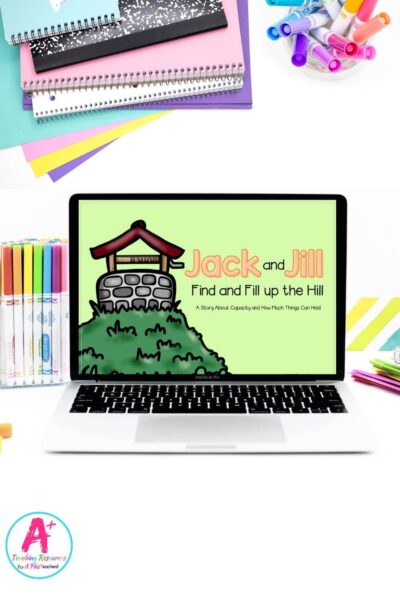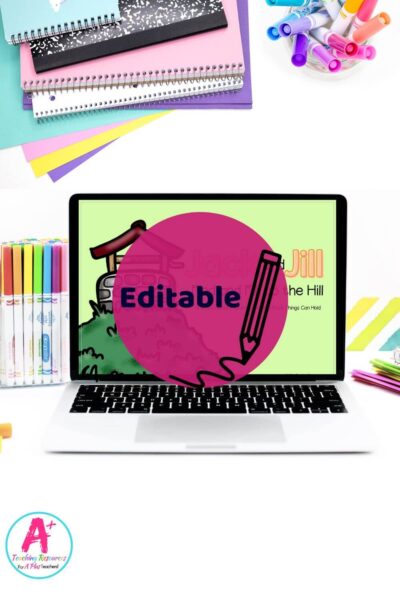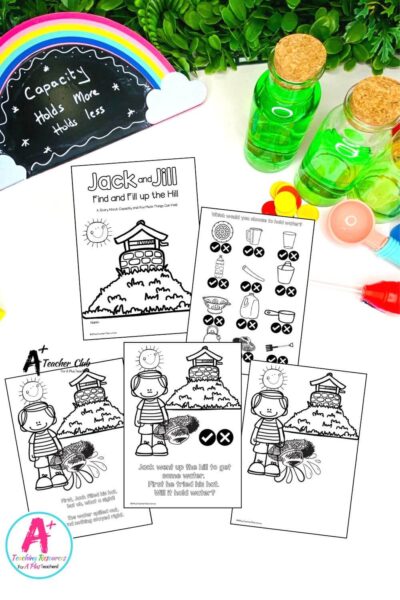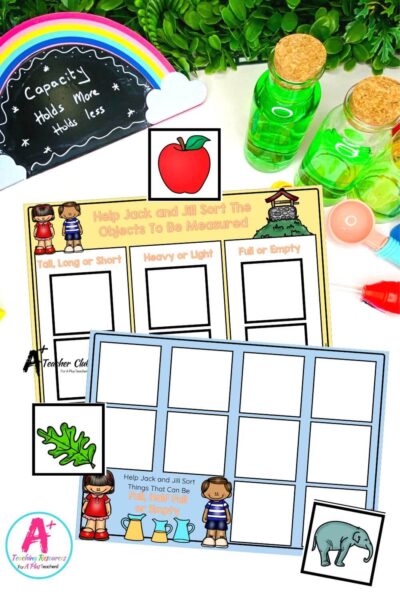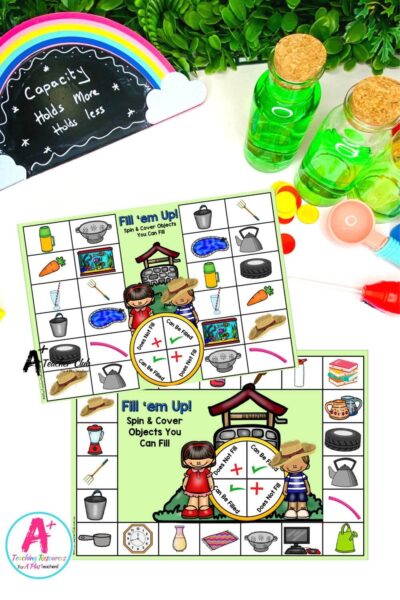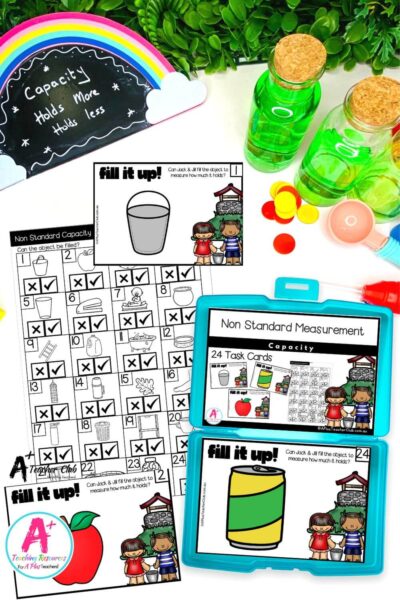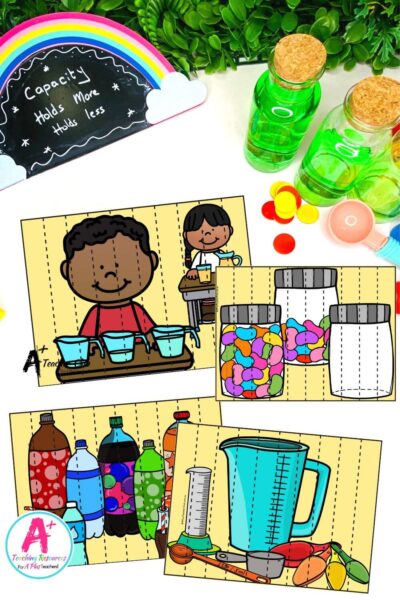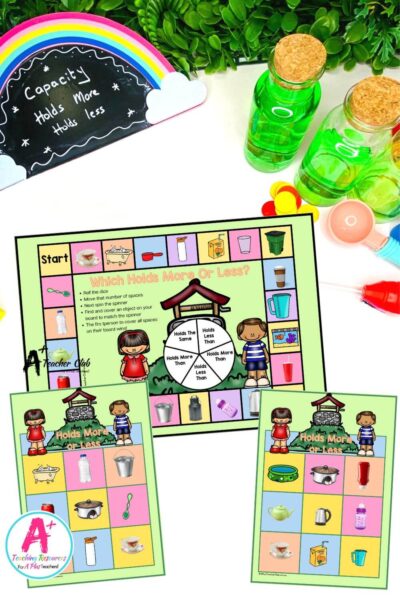Capacity Activities For Foundation Years Jack & Jill Theme
Classroom Theme Resources
Introduce young learners to non-standard measuring and comparing with our “Capacity Activities for Foundation Years: Jack & Jill Theme.” This resource engages Foundation Year students effectively, using the classic nursery rhyme to make learning about capacity both enjoyable and educational.
Jack and Jill: A Classic Nursery Rhyme for Teaching Capacity
The Jack and Jill nursery rhyme provides a fantastic way to teach young learners about capacity. Imagine Jack and Jill fetching a pail of water. This simple task prompts questions such as “How much water can the pail hold?” and “What happens if it’s too full?”
This familiar story helps us connect learning to a narrative that children already love, enabling them to grasp capacity through everyday activities like filling and carrying water. This connection brings math concepts to life, making them more relatable and interesting as kids see how different containers hold various amounts.
Hands-On Capacity Building Activities for Foundation Year Students
Our new resources take children on a journey where Jack experiments with different containers to learn about capacity. This lively context enhances their understanding of the concept.
Children actively engage with various objects to discover which container holds more or less. We also encourage them to estimate how many scoops or cups it will take to fill different containers, enhancing their skills in making educated guesses. By using non-standard units like cups and spoons, we keep the concepts straightforward and understandable.
Furthermore, children will predict and then verify how many units a container can hold, actively applying their problem-solving skills. They record their findings with simple drawings or tallies, mastering basic data recording methods.
Key Capacity Teaching Points for Foundation Year Learners
- Understanding Capacity – Learn how much a container can hold.
- Comparing and Ordering – Directly compare which container holds more or less.
- Predicting and Estimating – Make guesses about how many scoops or cups will fill a container.
- Measuring with Non-Standard Units – Fill a larger container using cups, spoons, or small containers.
- Problem-Solving with Non-Standard Units – Predict and test how many units will fill a container.
- Recording Findings – Document how much each container holds through drawings, tallies, or marks.
- Using Maths Talk – Use capacity vocabulary to explain your thinking.
Explaining Capacity vs. Volume to Foundation Year Students
Capacity refers to how much a container can hold, like water in a bucket, and is a practical measurement often used in everyday life, such as filling a water bottle.
Volume, however, measures how much space an object occupies, typically in cubic units. It applies to both solids and liquids, but capacity specifically deals with the volume a container can hold when filled with a liquid.
Are you ready to make learning about capacity a fun and memorable experience for your students? Dive into our Jack-and-Jill-themed resources and watch your students’ understanding of capacity soar!
Resources listed in this collection
Click to jump to...-
Non Standard Capacity PowerPoint - Jack & Jill
-
Non Standard Capacity PowerPoint - Jack & Jill (EDITABLE)
-
Non Standard Capacity – Jack & Jill – Student Booklet
-
Non Standard Measurement Sorting Capacity, Length & Mass - Jack & Jill
-
Non Standard Measurement Sorting Capacity, Length & Mass Worksheets- Jack & Jill
-
Non Standard Capacity – Spinner Games – Can You Fill It? - Jack & Jill
-
Non Standard Capacity – Spinner Games – ‘Fill ‘Em Up!’ Jack & Jill
-
Non Standard Capacity Task Cards - Will it Fill? - (Jack & Jill)
-
Non Standard Capacity Strip Puzzles
-
Non Standard Capacity Board Game - Holds More/Less Jack & Jill
What is Capacity?
Explore tags
More Non Standard Measurement Capacity Activities
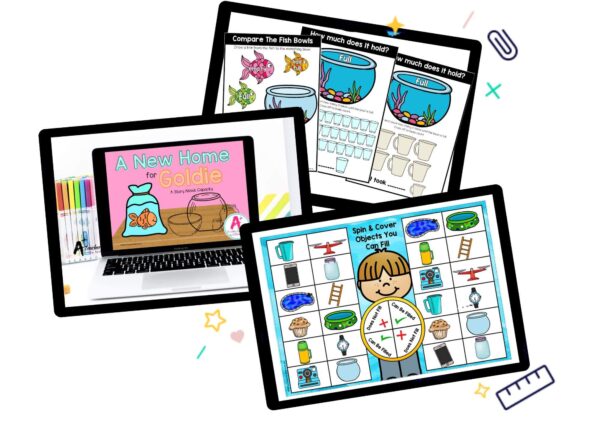
Capacity - K - PP
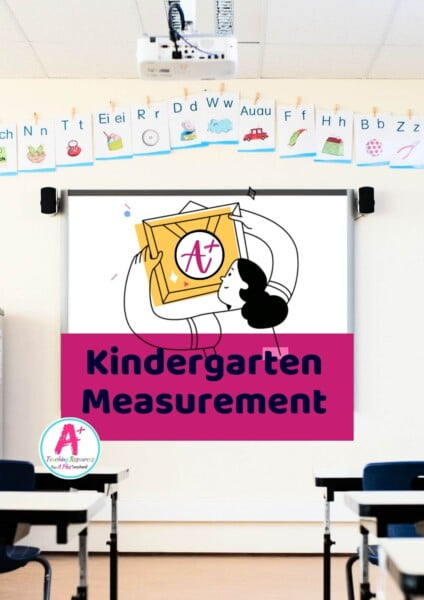
EYFS Non-Standard Measurement

Capacity - Non-Standard
Can't find what you're looking for?
Send us a request! Use this form to request a resource. Please give details of the learning area, topic, year level, curriculum links. We’ll be happy to take a look to see if we can fit it in. Unfortunately a request does not guarantee we will be able to make it!
"*" indicates required fields

